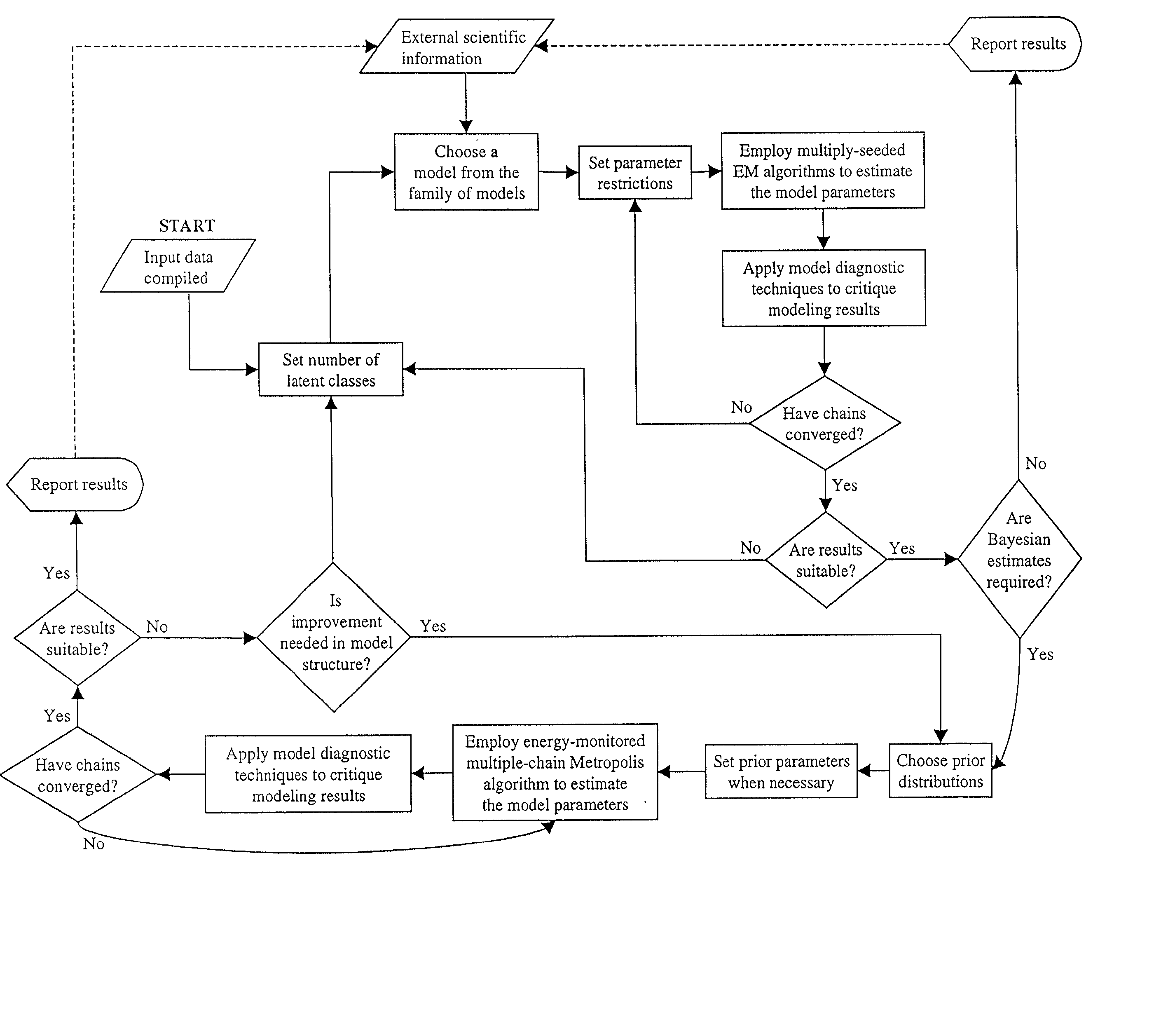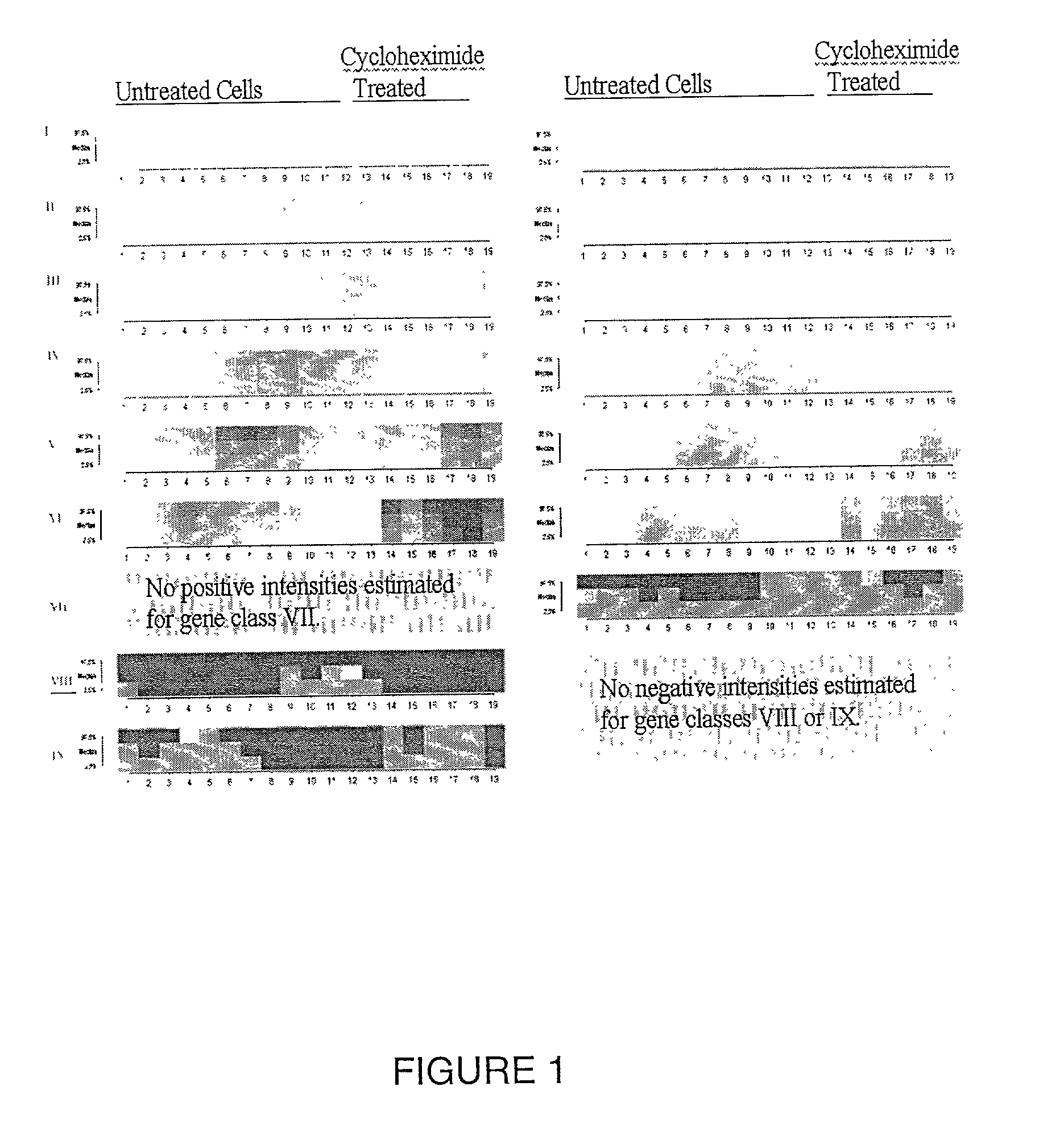Methods for classifying objects and identifying latent classes
a technology of object and latent class, applied in the field of object classification and latent class identification, can solve the problems of inability complex gene expression patterns, and limited capacity to predict metastatic potential
- Summary
- Abstract
- Description
- Claims
- Application Information
AI Technical Summary
Benefits of technology
Problems solved by technology
Method used
Image
Examples
Embodiment Construction
[0044] The present invention relates to methods that permit one to decipher patterns, relationships and other useful information from large amounts of data and making sensible connections between cause-effect events, which connections cannot be observed directly.
[0045] As mentioned above, a specific example arises in the context of predicting cancer metastatic potential through the molecular analysis of human cells or tumors. One goal of such an analysis might be to uncover patterns of gene expression that are observed from samples of cells or tissues, which patterns may portend metastatic potential of a particular tumor specimen or groups of tumor specimens. The present methods would be suitable, for example, for identifying in a genomic library one or more genes or sets of genes linked to metastatic properties of a cancer. It would also be beneficial in providing information to patients in the clinic of the relative metastatic potential of their tumor samples.
[0046] Cancer physiol...
PUM
 Login to View More
Login to View More Abstract
Description
Claims
Application Information
 Login to View More
Login to View More - R&D
- Intellectual Property
- Life Sciences
- Materials
- Tech Scout
- Unparalleled Data Quality
- Higher Quality Content
- 60% Fewer Hallucinations
Browse by: Latest US Patents, China's latest patents, Technical Efficacy Thesaurus, Application Domain, Technology Topic, Popular Technical Reports.
© 2025 PatSnap. All rights reserved.Legal|Privacy policy|Modern Slavery Act Transparency Statement|Sitemap|About US| Contact US: help@patsnap.com



